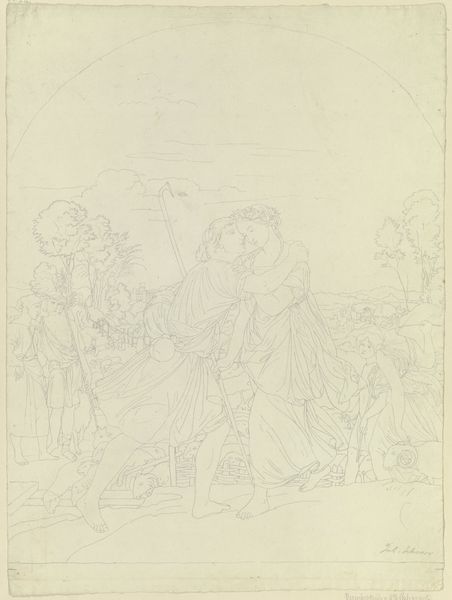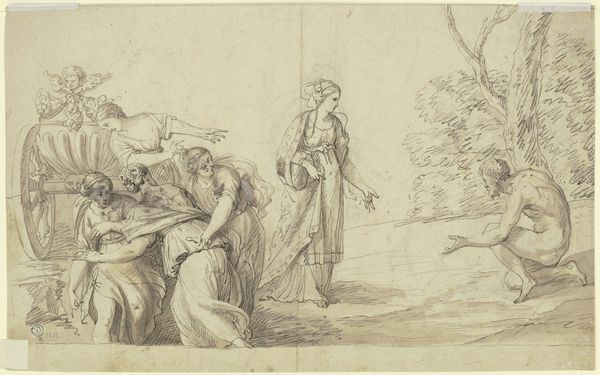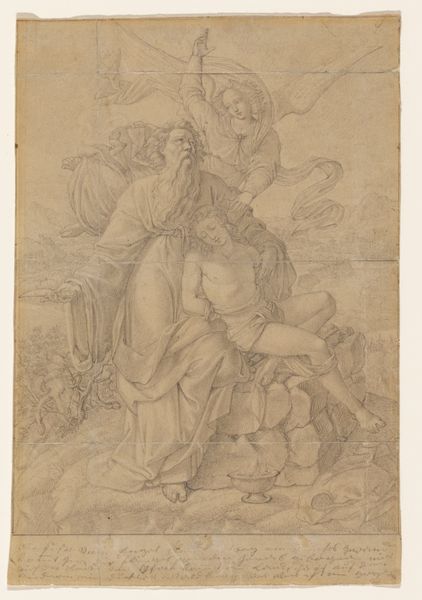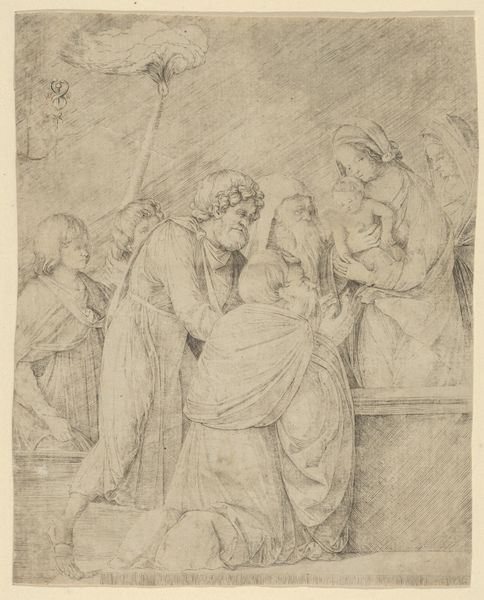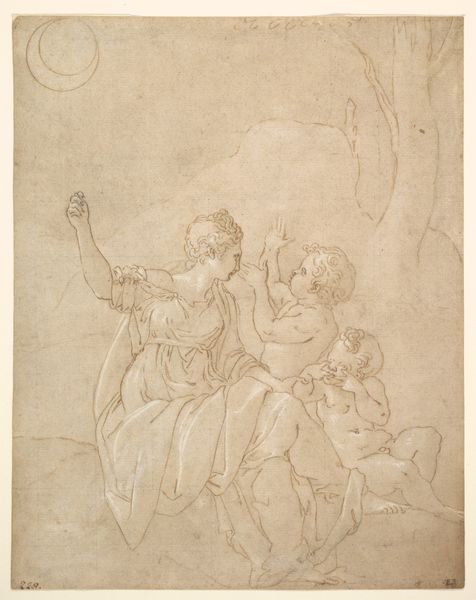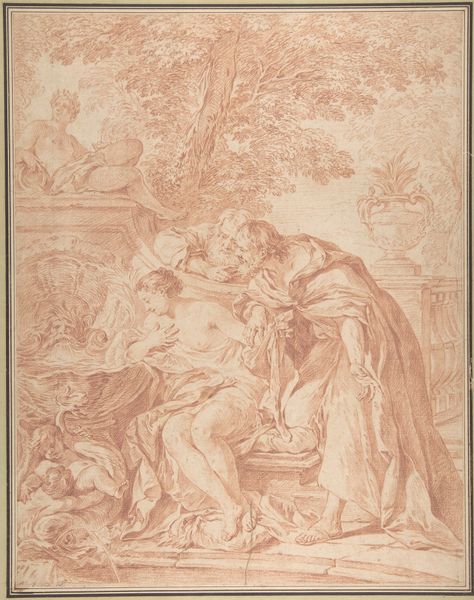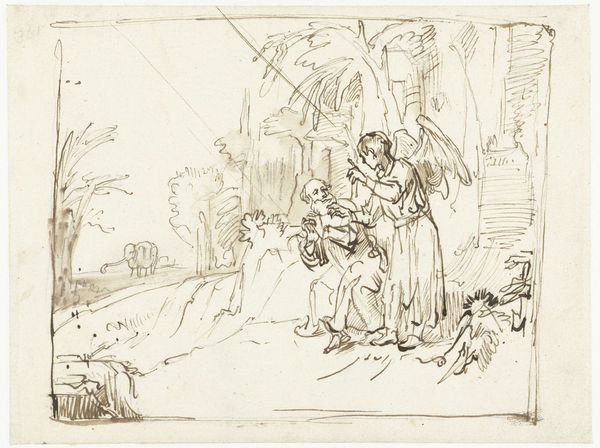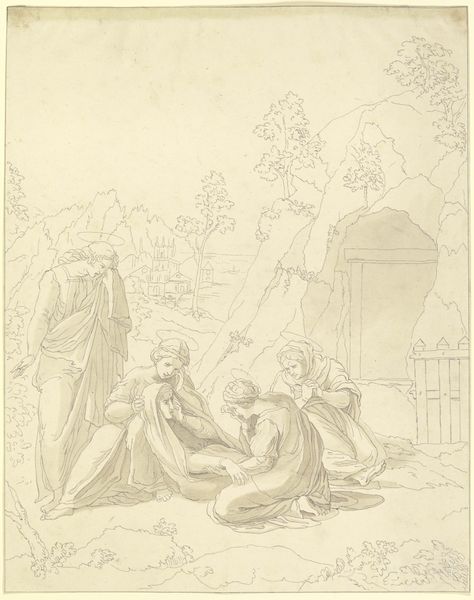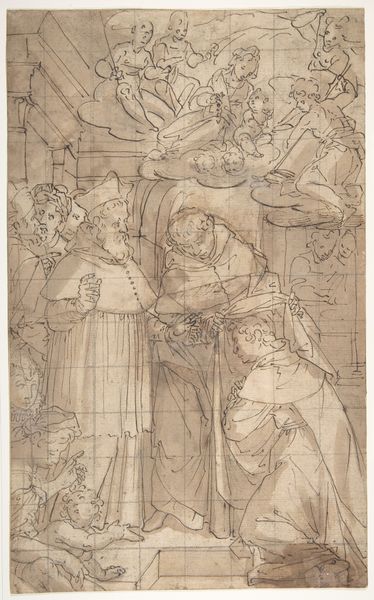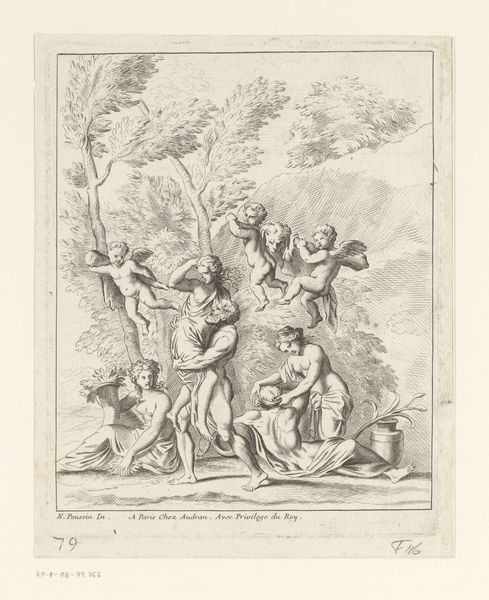
Copyright: Public Domain
Curator: Here we have Julius Schnorr von Carolsfeld’s "Jacob and Rachel," created in 1829. It’s an ink drawing on paper currently held at the Städel Museum. What's your initial impression of it? Editor: It feels very serene, almost dreamlike. The soft lines and gentle embrace create an atmosphere of idealized romance, despite what looks like the rigid grid structure used as guide in the composition. It has a powerful romantic quality. Curator: Absolutely. Schnorr von Carolsfeld was a key figure in the Nazarene movement, a group of German Romantic painters who aimed to revive honesty and spirituality in art. They drew inspiration from religious art, like Italian art before Raphael, specifically, the emphasis was on expressing moral and spiritual ideas, and you can see that emphasis here, in how the Old Testament narrative is presented as a symbol of purity and devotion. Editor: And we have to contextualize this idealism. How does it relate to the patriarchal underpinnings within these stories? Rachel is a figure defined largely by her relationship to Jacob, her desirability, her role in continuing the lineage. How does Schnorr von Carolsfeld’s romantic portrayal either reinforce or challenge those constraints? Curator: It's a valid point. On one hand, he romanticizes their union, possibly echoing the patriarchal structure of society. However, we should not be ahistorical by analyzing artworks with present values alone. Keep in mind that it presents this Biblical scene for a context with a widespread lack of education, with very limited access to books or historical records. Thus, visual representations are intended to both edify and record. Editor: That’s crucial to acknowledge, of course. However, acknowledging it shouldn’t stop us from challenging romanticized views of women rooted in religious contexts. The composition is also fascinating. The arch is clearly artificial, which is interesting from a historic context: are we observing this Biblical passage from within? What statement would such intentional constructivism reveal? Curator: Well, that might also be related to how artworks were often conceived as sections of larger works of architecture. Think of church windows. Still, thank you for highlighting the necessity of understanding historical art beyond just its aesthetic value. It's really crucial to understand art’s context, but more so how social and cultural dynamics impacted the message, the subjects, and how it continues to resonate or create new significations to our own understanding of history, society, and ourselves. Editor: Absolutely. These images, though from another era, still impact contemporary narratives and biases. So a contextualization of those is imperative.
Comments
No comments
Be the first to comment and join the conversation on the ultimate creative platform.

